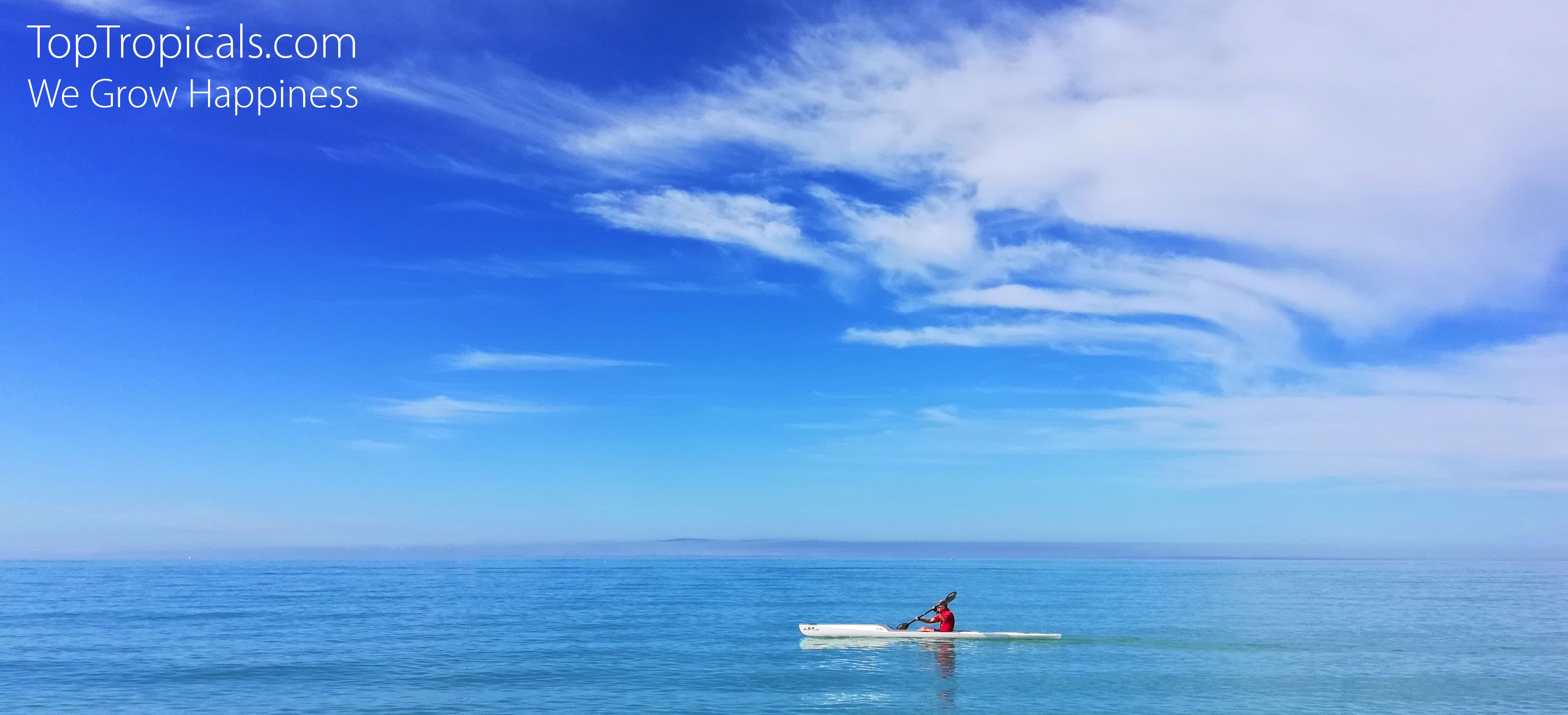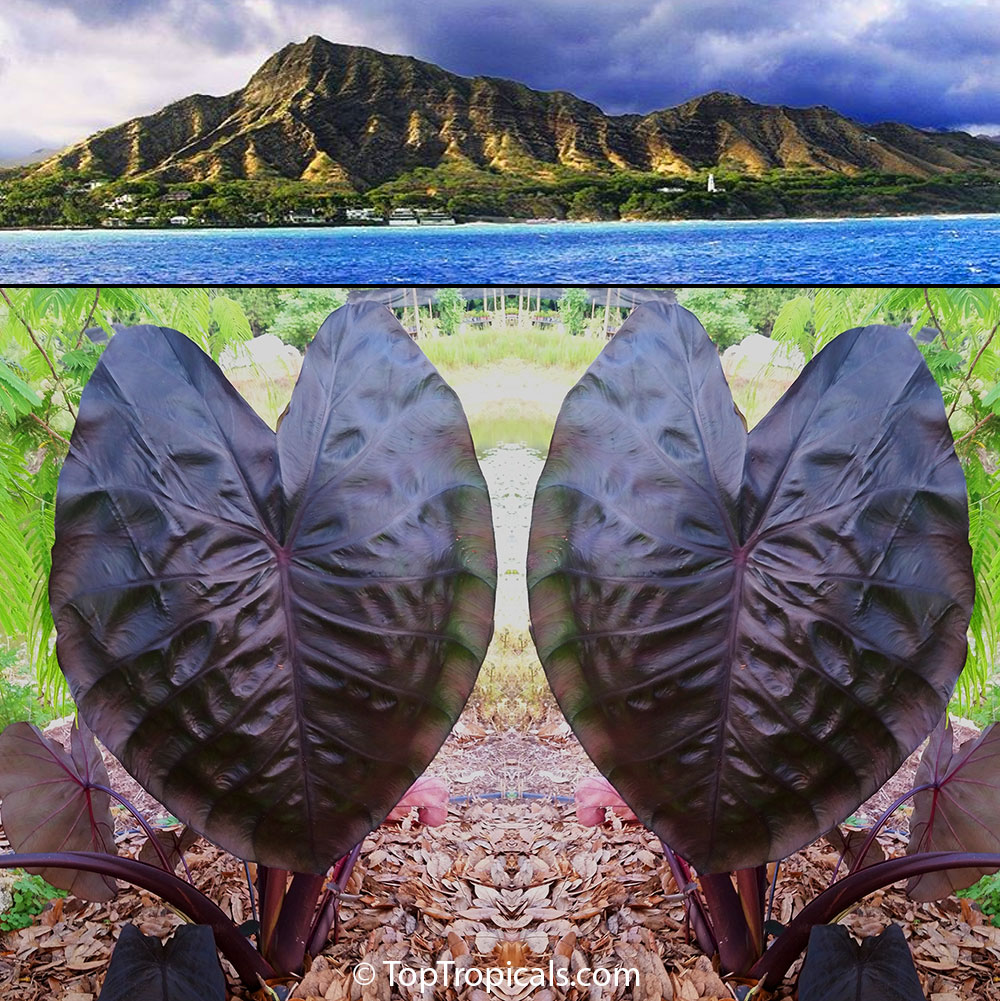Garden Blog - Top Tropicals
Need more ideas for compact and showy flowering trees? Try Rainbow Cassias
Rainbow cassia - Cassia Marginata.
- ♦️ Some hybrid cassias have spectacular color combinations and are called Rainbow Cassias.
- ♦️ We mentioned earlier some sunny, yellow-flowering cassias: Senna surattensis (Cassia glauca) - Scrambled Egg Bush, and Cassia siamea - Kassod Tree.
- ♦️ Other cassias can be pink or with multi-color flower combination, so-called Rainbow cassias (which are hybrids between yellow and pink cassias):
- ♦️ Cassia trees are compact, fast growing, tolerant to drought and poor soils, free-flowering and relatively cold hardy. Always a great choice!
Cassia grandis - Red Cassia
Cassia javanica - Apple Blossom Tree
Cassia marginata - Rainbow Shower Tree
Cassia roxburghii - Ceylon Senna
Cassia x nodosa - Pink Shower, Appleblossom.
❓ What cassias do you have in your garden? Share photos in comments👇
🎥 Rainbow cassia - Cassia Marginata.
🛒 Shop showy Cassia trees
#Butterfly_Plants #Trees
🏵 TopTropicals
Why some cassias are called Rainbow?
Rainbow cassia - Cassia Marginata
Cassias, besides yellow, can be pink, red, or with a multi-color flower combination.
Rainbow cassias are hybrids between yellow and pink or red cassias.
Some of the most showy cassias are:
Cassia grandis - Red Cassia
Cassia javanica - Apple Blossom Tree
Cassia marginata - Rainbow Shower Tree
Cassia roxburghii - Ceylon Senna
Cassia x nodosa - Pink Shower, Appleblossom.
♦️ Cassia trees are compact, fast growing, tolerant to drought and poor soils, free-flowering and relatively cold hardy. Always a great choice!
❓ What cassias do you have in your garden?
Share photos in comments👇
📚 More about cassias from previous posts:
How to add color to your yard
Rainbow Cassias
🎥 Rainbow cassia - Cassia Marginata.
🛒 Shop showy Cassia trees
#Butterfly_Plants #Trees
🔴 Join 👉 TopTropicals
Date:
New Video:
Dwarf Guava Hawaiian Rainbow
Psidium guajava "Nana"
Put a little Aloha in your garden... A guava that will bring a taste of the Islands!
This is a very small version of the favorite aromatic Guava - Nana. It grows only up to 5-6 ft tall with a short trunk and a branching, bushy habit. It is perfect for those who have limited space. It can be grown in a pot and fruits heavily. Provided with warm conditions, the tree can bear fruit almost year around. The fruit is round, about 2", pretty good size for a dwarf tree. The flesh is sweet, aromatic, and
varies from white to yellow to pink.
Subscribe to our Channel:
Stay updated with TopTropicals Videos by subscribing to our channel at YouTube.com/TopTropicals and get our latest video news of what is fruiting and blooming!
Date:
Easy Sunday Morning Deals: Dwarf Guava Hawaiian Rainbow
Saving on your favorite plants is Easy.
Easy like Sunday Morning...
..."A ' ohe loa i ka hana a ke aloha.
Distance is ignored by love..."
- Toni Polancy -
It's time for our favorite day and another Easy stroll through Top Tropicals Garden with savings of
50% and MORE!
Put a little Aloha in your garden....
Two Exotics from Paradise
It may be cold where you are, so take a trip with us to the Hawaiian Islands. Tropical breezes,
soothing ocean waves and an unbeatable selection of tropical plant treasures...
This week we bring the Aloha to you. A guava that will bring a taste of the
Islands and a spectacular variety of Majestic Taro.
Dwarf Guava Hawaiian Rainbow
- Ready to fruit this year! -
This is a very small version of the favorite aromatic Guava - Hawaiian Rainbow Nana. It grows only up to 5-6 ft tall, perfect for limited space. It can be grown in a pot and fruits heavily almost year around. The flesh is sweet, aromatic, and varies from white to yellow to pink.
Colocasia Diamond Head
- Large Developed plants! -
Diamond Head is a spectacular variety of Taro is named after the volcanic cone on the Hawaiian island of Oahu - both the cone and plant are black and lustrous! Mature plants form a well-behaved clump and reach 3 to 4 feet tall, with leaves up to 2 feet wide! A must for black plant fanatics. Grows more compact that other Colocasias and no two leaves are the same!
Colocasia Diamond Head,
regularly $42.95,
is on Easy Sunday sale for only $21.48
Dwarf Guava Hawaiian Rainbow, regularly $52.95,
is on Easy Sunday Sale for only $26.48.
Combine the two for maximum Aloha and save even more:
only $42.95 for both - one plant comes FREE!
Remember, the Easy Sunday Deal expires on Monday January 17th.
5 simple rules how to grow a fragrant Plumeria tree and make it bloom for you, just like on the pictures
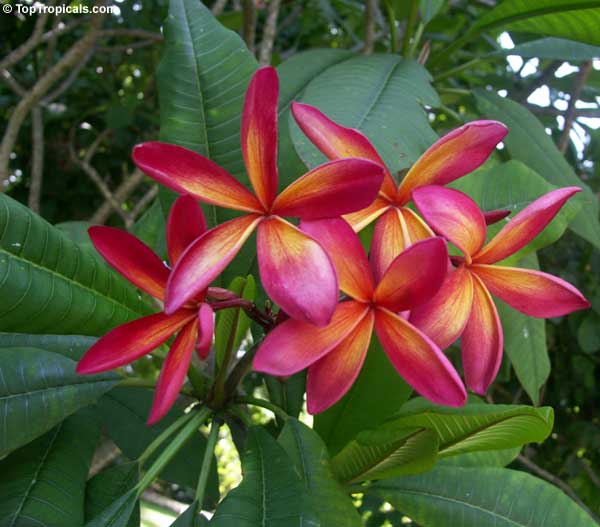
Plumeria, Frangipani red rainbow

Plumeria, Frangipani pink rainbow

Plumeria, Frangipani rainbow
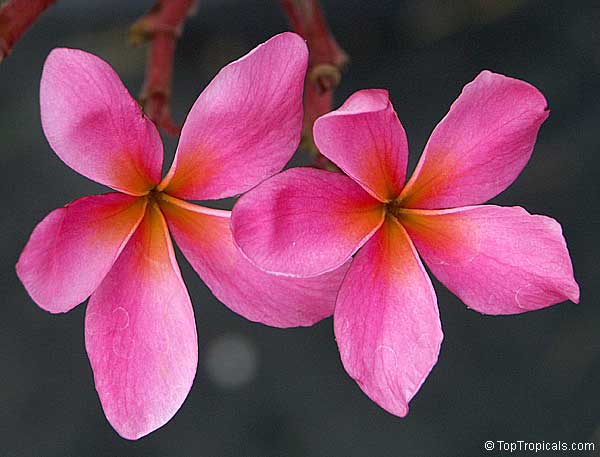
Plumeria, Frangipani dark pink
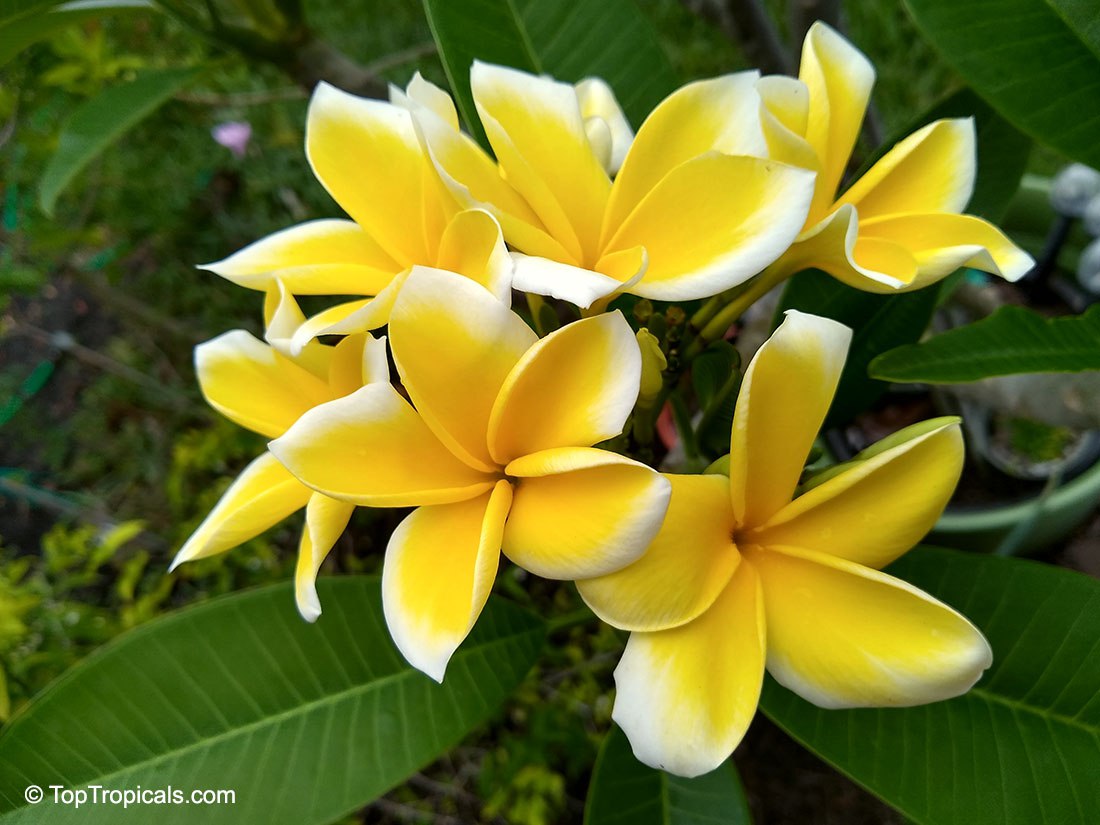
Plumeria, Frangipani yellow
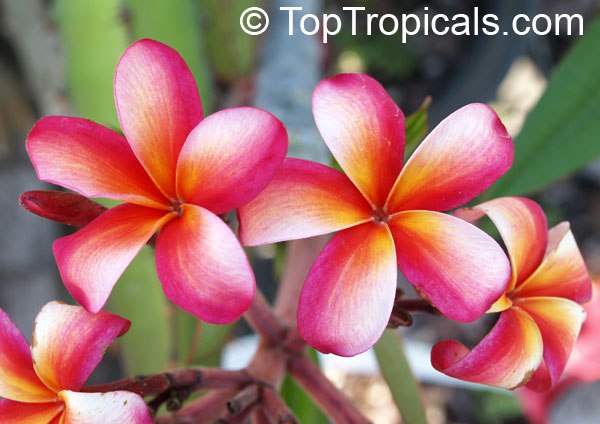
Plumeria, Frangipani red rainbow
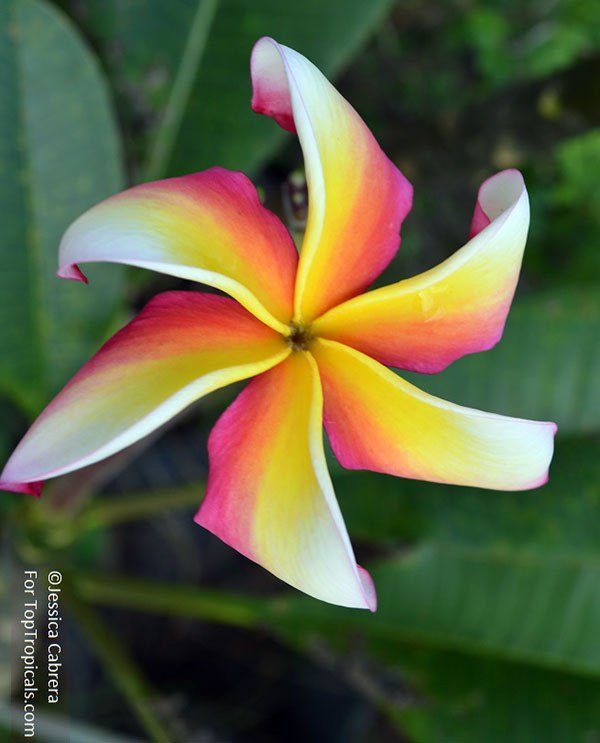
Plumeria, Frangipani rainbow

Plumeria, Frangipani white
- Soil must be well-drained: use potting mix with good amount of perlite, bark, and coconut fiber. We recommend Sunshine Abundance professional soil mix for best results.
- Container must be the size of the root ball and not much bigger, to avoid water-logging. Plumeria likes dry conditions. Water only when the soil gets slightly dry.
- Full sun is a must. If grown indoors, keep the plant in the brightest spot and take it outside for the sun bathing when possible.
- Dormancy in winter: this little tree drops leaves during winter. When it happens, reduce water to the minimum and let your Plumeria rest until it starts sprouting new leaves.
- Fertilize for the most profuse flowering with a plant food that is high in Phosphorus. Plumeria is a heavy feeder. We recommend Sunsine Megaflor Bloom Booster liquid fertilizer - it can be used with every watering and year around.
Enjoy the fragrant blooms!
🛒 Choose from fantastic colors of Plumeria
#Perfume_Plants #Container_Garden
🏵 TopTropicals
How to add color to your yard
Rainbow Cassia
- 🔜 Lovely Cassias we mentioned in earlier post are in full bloom today - they love the Summer Heat! They are our favorite Summer flowers.
- 🔜 Cassia (Senna) trees are compact, fast growing, tolerant to drought and poor soils, free-flowering and relatively cold hardy. Always a great choice!
- 🔜 Cassias come in several colors: yellow, orange, pink, red and rainbow.
- 🔜 Yellow-flowering cassias:
- 🔜 Pink/red and multi-color Rainbow cassias (which are hybrids between yellow and pink cassias):
Senna surattensis (Cassia glauca) - Scrambled Egg Bush
Cassia siamea - Kassod Tree
Cassia didymobotrya - Popcorn Cassia
Senna alata - Empress Candles
Cassia occidentalis - Fedegoso, Coffee Senna
Cassia grandis - Red Cassia
Cassia javanica - Apple Blossom Tree
Cassia marginata - Rainbow Shower Tree
Cassia roxburghii - Ceylon Senna
Cassia x nodosa - Pink Shower, Appleblossom.
❔ What cassias do you have in your garden?
Share photos in comments👇
🛒 Shop showy Cassia trees
#Butterfly_Plants #Trees
🏵 TopTropicals
Mango Rainbow tasting table-2: whats the taste of that Mango variety?
Mango Rainbow tasting table
We've had another mango tasting table and asked participants to describe the taste in a few words. And this is what we got:
- 🟠 Haden - mild, melting, classic heavenly mango flavor,dark yellow flesh, almost fiberless.
- 🟠 Ugly Betty - opposite to the name, the taste is excellent , juicy, melting, sweet.
- 🟠 Cotton Candy - true candy, fiberless, sweet, melting.
- 🟠 Madame Fransis - dark orange pulp, slightly fibrous, robust, meaty like a steak, good with cognac. A little pulpy but unique flavor.
- 🟠 Diamond - bright yellow, fiberless, sugary, juicy, no pulp at all, classic mango taste, good with ice cream, "wow" taste!
- 🟠 Pickering - zesty, waterfall: all the flavors come at once, eat with White wine and/or a cake. Oval fruit somewhat flat, very large for a dwarf tree!
- 🟠 Baptiste - hint of citrus, melts in your mouth, dark orange flesh, crisp, eat with Red wine and cheese.
- 🟠 Florigon - creamy, buttery, spicy. Eat with Ice cream!
- 🟠 Tommy Atkins - has a bit zing to it, perfect consistency, perfect taste. Super colorful, crimson red to purple skin!
- 🟠 Nam Doc Mai - gold standard! Perfect every day.
- 🟠 Carry - tastes even better than all others, smooth buttery, lite!
❔ What Mango varieties have you tried this year?
Share in comments 👇
📝 Previous post: Mango Rainbow Tasting Table
🛒 Shop Mango varieties
#Food_Forest #Mango #Mango_Rainbow
🔴 Join 👉 TopTropicals
Date:
News arrivals: Adenium Rainbow
Collect them all!
Exciting news: Fresh Adenium arrivals straight from Thailand! Behold an array of breathtaking varieties in an explosion of colors.
Adeniums are a must-have for gardeners, with enthusiasts avidly collecting diverse strains. These resilient plants flourish in pots, whether adorning outdoor gardens or brightening indoor spaces. With their charming compactness and eye-catching caudex, Adeniums effortlessly spark conversation and make memorable gifts.
Every year, new hybrids emerge, boasting double and triple blooms in an array of captivating hues - think vibrant reds, pinks, yellows, regal purples, and even dramatic blacks. Each variety is a masterpiece, showcasing unique patterns from dots to stripes to variegations.
Act fast - quantities are limited! Seize the opportunity to expand your collection now!
Photo above: selected varieties that just have arrived.
Mango Rainbow tasting table: whats the taste of that Mango variety?
Mango Rainbow tasting table
We just had a mango tasting table of a few early and mid-season varieties and here is our impression:
- 🟠 Tommy Atkins (purple) - the earliest variety, sweet a juicy, but a bit fibrous. The fruit is super colorful! The tree is an excellent producer, vigorous and problem-free.
- 🟠 Haden (red) - a full sweet flavor, less fibrous than Tommy. Very colorful, large fruit.
- 🟠 Florigon (yellow-green, round) - completely fibreless, sweet and flavor is somewhat mild pineapple-like.
- 🟠 Baptiste (bright yellow) - very sweet, firm flesh, good flavor.
- 🟠 Val Carrie (green elongated) - reminds large Asian mangoes, with firm flesh, very sweet, fibreless and juicy. It is a cross between Valencia Pride (large fruit) and Carrie (excellent flavor). It took the best from its parents. Very aromatic flesh has no fiber at all.
- 🟠 Kent (large green-and-red) - excellent flavor, large size, and very little fiber. Eat before fruit gets too ripe.
❔ What Mango varieties have you tried this year?
Share in comments 👇
📝 See also earlier posts:
- 🔸 5 most Favorite Mango Varieties
- 🔸 Top 10 Dwarf "Condo" Mango
- 🔸 Top 5 vigorous growers and reliable producers
- 🔸 Top 5 exotic Mango varieties for rare fruit collection
- 🔸 How to grow a mango tree
- 🔸 How to protect mango fruit from rodents
🛒 Shop Mango Trees
#Food_Forest #Mango #Mango_Rainbow
🏵 TopTropicals
Date:
Discover 10
best fruit trees to grow
in Florida and Southern landscapes
Q: We recently moved into our new home in Florida, and the property is a great size - 5 acres - but it currently has no trees, just a few palms. I'm looking to plant some productive fruit trees to start building our own Food Forest. What fruit trees would you recommend as a good starting point?
A: With five acres of space, you have a fantastic opportunity to create a fruitful garden that can provide for your family for many years to come. Below are our top recommendations for must-have, easy-to-grow fruit trees that thrive in Florida's climate, grow quickly, and start producing right away.
1. Mango Tree
Mango trees (Mangifera indica) are a must-have for any Florida garden, embodying the essence of the Sunshine State with their delicious and nutritious fruit packed with vitamins and fiber. These fast-growing, low-maintenance trees thrive with minimal water and are heat-tolerant. Grafted varieties produce high-quality, fiberless fruit in just 2-3 years, while dwarf "condo" mangoes are perfect for smaller spaces or containers. While young trees need frost protection, mature trees handle cold better. Grafted mangoes offer rich taste that you won't find in commercially grown, fibrous varieties, ensuring a sweet and vibrant harvest from your own garden.
2. Avocado Tree
The Avocado tree (Persea americana) is an essential addition to any tropical or subtropical garden. Known for its health benefits and superfood status, it's a favorite fruit that's not only productive but also a beautiful ornamental tree. Some avocado varieties are more cold-tolerant than mango trees, with the ability to survive temperatures below 25F. While many enjoy growing avocado from seed, only grafted trees guarantee quality fruit and immediate production, as seedlings can take 7-8 years to bear fruit. To successfully grow avocado, ensure good drainage by planting on a raised mound (4-6 inches) and keep the soil consistently moist. There are also compact varieties like Wurtz and Fuerte that thrive in containers or small spaces, making them ideal for patios and small gardens.
3. Tropical Cherries
Tropical cherries, such as Cherry of the Rio Grande (Eugenia aggregata), Grumichama (Eugenia brazilensis), Pitomba (Eugenia luschnathiana), and Black Surinam Cherry (Eugenia uniflora var. Lolita), are popular and easy-to-grow fruit trees that offer fast growth and excellent fruit production. These compact, versatile trees thrive in both the ground and containers, starting to produce fruit almost immediately. Eugenias are low-maintenance, requiring minimal water, thriving in various soil types, and being pest-free. They are heat-tolerant and can endure cool winters, surviving light frosts. Birds love the fruit, but don't worry - there will always be plenty for everyone.
4. Barbados Cherry Tree
Barbados Cherry (Malpighia glabra), also known as Acerola, is a tropical cherry renowned for having the highest vitamin C content of any fruit. This nutrient-packed fruit is perfect for jellies, jams, and freezing without losing its vitamin C. The Barbados Cherry is a fast-growing, dense shrub that fruits multiple times a year, providing abundant harvests for gardeners seeking quick results. It thrives in alkaline soil, tolerates drought, and is relatively cold-hardy, withstanding light freezes. Birds love the fruit, making it a great addition to wildlife-friendly gardens. The dwarf variety, Nana, with its small leaves and fruit, is perfect for containers, borders, or even bonsai, adding ornamental value to any space.
5. Noni Tree
The Noni Tree (Morinda citrifolia) is a top superfood plant that makes a fantastic addition to any Southern garden. Known for its numerous medicinal benefits, Noni fruit offers anti-inflammatory properties, relief from arthritis, and support for conditions like diabetes, metabolism, and weight loss. It's even believed to help fight cancer. Noni trees grow quickly and begin producing fruit within 2 years from seed. This tough, resilient plant thrives in poor soil, endures summer heat, and withstands drought conditions. Despite its tropical appearance, Noni is surprisingly cold-hardy, recovering well after leaf damage in cooler weather. In addition to its health benefits, the Noni tree has ornamental value, with large, waxy leaves and unique fruit, where the flower appears to grow directly on the fruit!
6. Macadamia Nut Tree
The Macadamia Nut Tree (Macadamia integrifolia) is a fantastic addition to any garden, allowing you to grow these delicious, high price tag, nutrient-rich nuts right at home. These trees are cold-hardy, grow quickly, and thrive in all Florida soil types. Once established, they are productive and can tolerate both flooding and drought. Older trees can survive colder winters, while young trees need protection from temperatures below 25-26F. Macadamia trees like plenty of water and a special fertilizer program, including liquid fertilizers and microelements, to ensure healthy root development and optimal production. Aside from being rich in healthy fats, vitamins, and minerals, macadamia nuts offer numerous health benefits, such as improved digestion, heart health, weight management, and blood sugar control. They are also packed with tocotrienols - antioxidants which may protect against cancer and brain diseases.
7. Papaya Tree
Papaya trees (Carica papaya) are resilient, easy to grow, and produce fruit year-round. Rich in papain, a digestive enzyme, papayas are a superfood that promotes gut health. These fast-growing trees often begin producing fruit within the same year they're planted, providing quick rewards for gardeners. Many varieties, especially dwarf papayas, are space-efficient, reaching only 6-8 feet tall while still yielding large crops, making them perfect for small gardens. Surprisingly hardy for a tropical plant, papayas can withstand light freezes and strong winds (tested in hurricanes!). While they are self-fertile, planting 2-3 different cultivars improves pollination and increases yields. "Solo" cultivars, with their smaller, round or oval fruits, are sweet and less susceptible to fruit flies.
8. Guava Tree
Guava trees are beloved for their flavorful fruit, commonly used in juices, drinks, and desserts. Popular varieties include Tropical Guava (Psidium guajava), Cattley Guava (Psidium littorale), Cas Guava (Psidium friedrichsthalianum), and Pineapple Guava (Feijoa sellowiana). Despite their tropical nature, guavas are surprisingly cold-hardy, suitable for cooler climates and occasional frost. These trees thrive in moist conditions and can tolerate some flooding, while their compact growth makes them easy to maintain at any height or shape. Guavas are fast-fruiting, often producing fruit within a year of planting, and even some varieties in 1 gal containers. The dwarf Nana variety is perfect for container culture, producing full-sized fruit in a compact form. Guava trees are mostly pest-resistant, though mealybugs may require occasional treatment with neem oil in humid, rainy areas. Planting multiple guava trees ensures a continuous supply of fresh, juicy fruit and delicious guava juice for everyone to enjoy.
9. Jackfruit Tree
The Jackfruit tree (Artocarpus heterophyllus) is a striking, fast-growing tree known for producing the largest fruit grown on a tree, making it a showstopper in any garden. Nutrient-packed and often used as a meat substitute in South Asian cuisine, Jackfruit is also delicious in curries, chutneys, and as dehydrated chips. These trees grow quickly, have large waxy leaves, and can be maintained at a compact height of 7-8 feet, making them ideal for smaller spaces and easier cold protection. Despite being a tropical species, Jackfruit trees are relatively cold-tolerant and can survive light frost (although on the account of production volume), with established trees being more hardy than seedlings. Jackfruit trees begin producing fruit within 3-4 years from seed, and varieties come true to seed, eliminating the need for grafting, though it can be done for specific varieties.
10. Loquat Tree
The Loquat tree (Eriobotrya japonica) is a fast-growing, drought-tolerant, and highly cold-hardy tropical fruit tree that thrives in Florida gardens. Loquats are heavy producers, with juicy, aromatic fruit that ripens from early spring to early summer, offering a delicious apricot-like flavor. This compact tree is perfect for small gardens, beginners, and those with limited space. Loquats are undemanding, thriving in any soil and withstanding summer heat, winter cold, heavy rains, and occasional flooding. Nutrient-rich, they are high in sugar, acids, vitamins B and C, minerals, and pectin. Loquats are versatile, enjoyed fresh or used in fruit salads, jams, jellies, chutneys, pies, sauces, and even wine-making, and they are often used as a natural sweetener.

